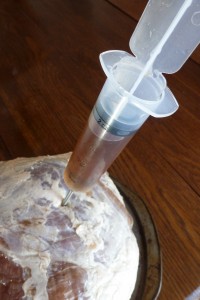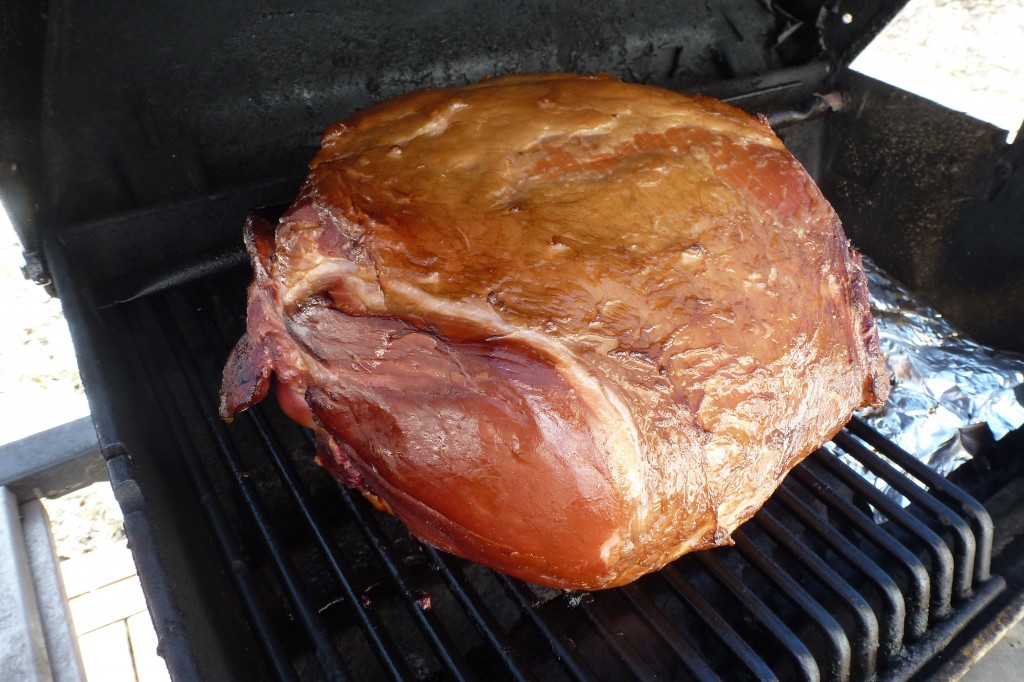 I like roasting large joints of meat. The largest that I typically cook is the Easter ham, which is the better part of a pig’s hind leg. This year’s fresh leg was fourteen and a half pounds.
I like roasting large joints of meat. The largest that I typically cook is the Easter ham, which is the better part of a pig’s hind leg. This year’s fresh leg was fourteen and a half pounds.
In years past I’ve had problems with brine penetration. Though I made the brine with the proper concentration of curing salt, and fully submerged the leg for the recommended week, when I carved the ham I found a patch of grey pork in the centre. The year after that I brined the ham for a few extra days, but it still wasn’t pink all the way through.
This year I bought a syringe for injecting brine from Hendrik’s. It holds 2 fl. oz, and the needle has perforations all along its length so that brine is distributed to several places at once. I can’t remember how much it cost, but it’s kind of a piece of junk. The gasket on the piston doesn’t form a proper seal with the inside of the syringe, so it has trouble sucking up brine. It still works; it’s just finicky.
Most sources recommend injecting 1 cup of brine for every 5 lbs of meat. This amount would significantly accelerate the curing process. Since I was still going to brine my ham for more than a week, I halved the recommended amount, injecting 4 fl. oz. per 5 lbs of meat into the very centre of the ham and near the bone.
After close inspection of the cooked, carved meat, the brine injection was deemed a success. Complete, even penetration, making for a rosy, salty ham.
One of the ham rounds, pink throughout:

